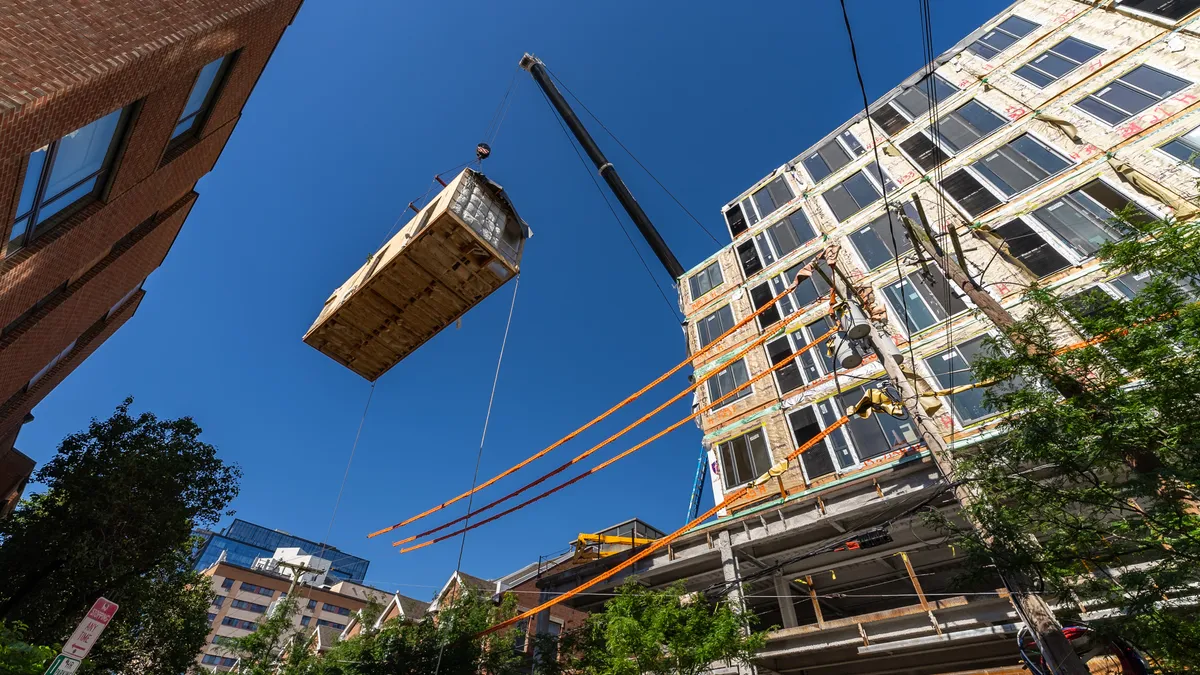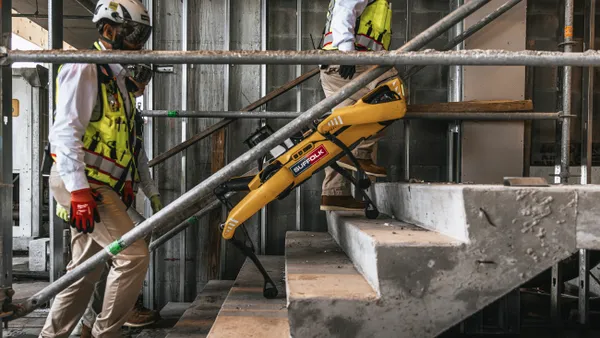Dive Brief:
- Though residential high-density construction units remain the most prevalent type of modular building, Vaughan Buckley, CEO at Volumetric Building Companies, a Philadelphia-based modular builder, noted a recent shift away from market-rate multifamily projects to affordable housing developments.
- Affordable housing projects jumped from around 10% of VBC’s pipeline to about a 50% share over the past year, according to the company. That shift to affordable housing, though still residential, signals a drastic change in funding sources for these projects, said Buckley.
- “Most of those [affordable housing] projects have limited or very little exposure to interest rates,” said Buckley. “They’re mainly funded by equity or government grants, which means they’re much more stable.”
Dive Insight:
VBC purchased the Tracy, California, assets of Katerra, the failed offsite construction company, about two years ago.
Since that move in 2021, the modular builder has acquired a Berwick, Pennsylvania, manufacturing facility and merged with Poland-based Polcom, a steel modular building and custom furniture manufacturing conglomerate. The modular builder’s targets exceed 1 million square feet of module production, said Buckley.
VBC recently announced several affordable housing developments in the U.S., ranging from projects in Philadelphia to Oakland, California, according to the company’s social media announcements.
For example, VBC recently collaborated with Avanru Development Group on an affordable housing project in Swanzey, New Hampshire. The building includes 138 modular units in over 90,330 square feet across two three-story buildings, according to the company.
Along with this increased attention on affordable housing construction, Buckley said about 15% to 20% of VBC’s production will still go toward typical market-rate multifamily buildings. He also pinpointed student housing, hospitality and senior living projects as specific subsectors within modular that continue to garner attention as well.
From a design perspective, there's also more of a focus on smaller units. Sara Ann Logan, vice president of design at VBC, sees that trend affecting strategies across the country.
“We’re seeing a pretty significant drop in size of units put on the market, by anywhere between 20 square feet to 30 square feet, depending on what sector you’re looking at,” said Logan. “That’s a national movement we’re seeing influence our design strategies, both in the affordable housing space and the market-rate space.”














